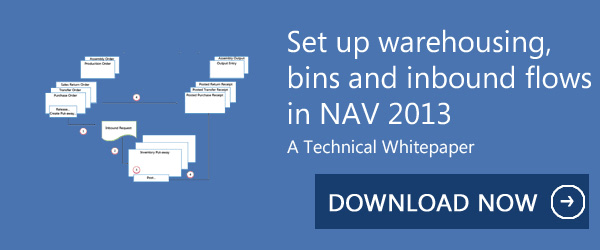Not only mobile technologies have witnessed rapid growth over the past few years, they also have given rise to a new trend, irreversibly transforming the way we live and do business. New mobile apps have already been integrated with various software products and devices, allowing people to control everything, from lights and locks around properties to complex manufacturing processes.
Unfortunately, all these deliver insufficient data to predict the innovations the third industrial revolution, already on the horizon, promise to bring along. Since new apps are continuously changing everything we know about the solutions we use, the future of ERP has become more unpredictable than ever before.
And Here Is the Proof
Smartphones currently replacing common devices, such as cameras and music players, are about to take over more important functions, promising to become indispensable tools in a series of industry sectors, including manufacturing and engineering.
One of these functions is mobile 3D scanning. Delivering a brand new technology, mobile 3D scanning apps enable Smartphones to capture objects and scenes, subsequently displaying them as 3D visual representations for further processing, such as measuring, editing and even 3D printing.
Though numerous 3D scanning solutions have been developed over time, the new technology aims to turn 3D scanning into a simple operation -- similar to taking pictures with your Smartphone -- that no longer requires dedicated hardware. Further, the latest 3D scanning apps are able to connect with phones’ graphics processing units, allowing users to check visual representations and perform calculations instantly. The ability to verify 3D models on the spot gives you the opportunity to identify any missing parts that must be scanned in order to get complete 3D representations of objects.
Applications of 3D Scanning Software
Primarily developed for industrial use, cutting-edge mobile 3D apps not only collect and process data to deliver 3D models, but also output information in a format that can be easily recognized by most software solutions. As a result, 3D technology can be used to:
- Create customized products for different industry sectors, including machinery, healthcare and even fashion
- Verify product quality by comparing manufactured products to 3D models
- Scan buildings and create accurate 3D visual representations for the construction industry
- Develop CAD models of different parts to update existing products or make new ones
Since the most common uses of 3D scanning include reverse engineering, digital archiving and 3D printing, it’s expected to have a significant impact on the future of ERP.
Is the Future of ERP at Stake?
Although many ERP users may think that 3D technologies endanger the future of ERP, industry experts explain that new solutions are being constantly developed to extend the capabilities of existing ERP systems.
For instance, a mobile 3D scanning app installed on your Smartphone can be used to obtain a comprehensive 3D visual representation of an older item. Then, you can use your ERP solution not only to access the 3D model saved on your Smartphone, but also to make various changes, such as adding or removing elements and modifying physical dimensions. As soon as you finalize the 3D model, you can connect the same ERP system to a 3D printer and create your first prototype.
The advantage? In comparison to traditional methods of creating prototypes, which use subtractive processes, removing material and producing waste, 3D printers create products by using only the material required to build the items. What does it mean to a manufacturer? Zero waste, lower costs and greater profits.
If the new product is worth the investment, you can use the same ERP system to calculate costs based on different materials, assign specific tasks to employees according to their roles and capabilities, create multiple projects and choose the most advantageous one, and even schedule production.
By combining a reliable ERP system with the right 3D scanning apps and 3D printer, the cost and time of designing and prototyping in manufacturing can be reduced to minimum. Hopefully, 3D scanning and printing will soon help manufacturers produce large amounts of standardized products not just prototypes. This will have a tremendous impact on the future of ERP, encouraging the demand for new ERP solutions, on one side, and further development, on the other.
 Mobile 3D And The Future of ERP Software">
Mobile 3D And The Future of ERP Software">

